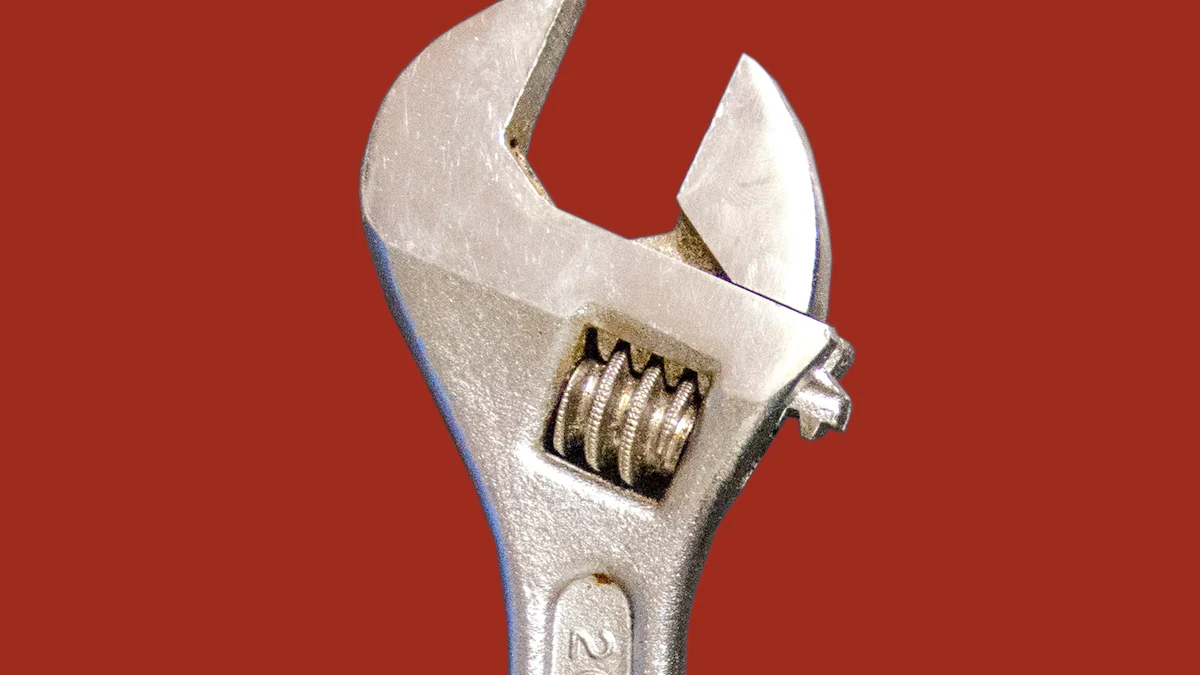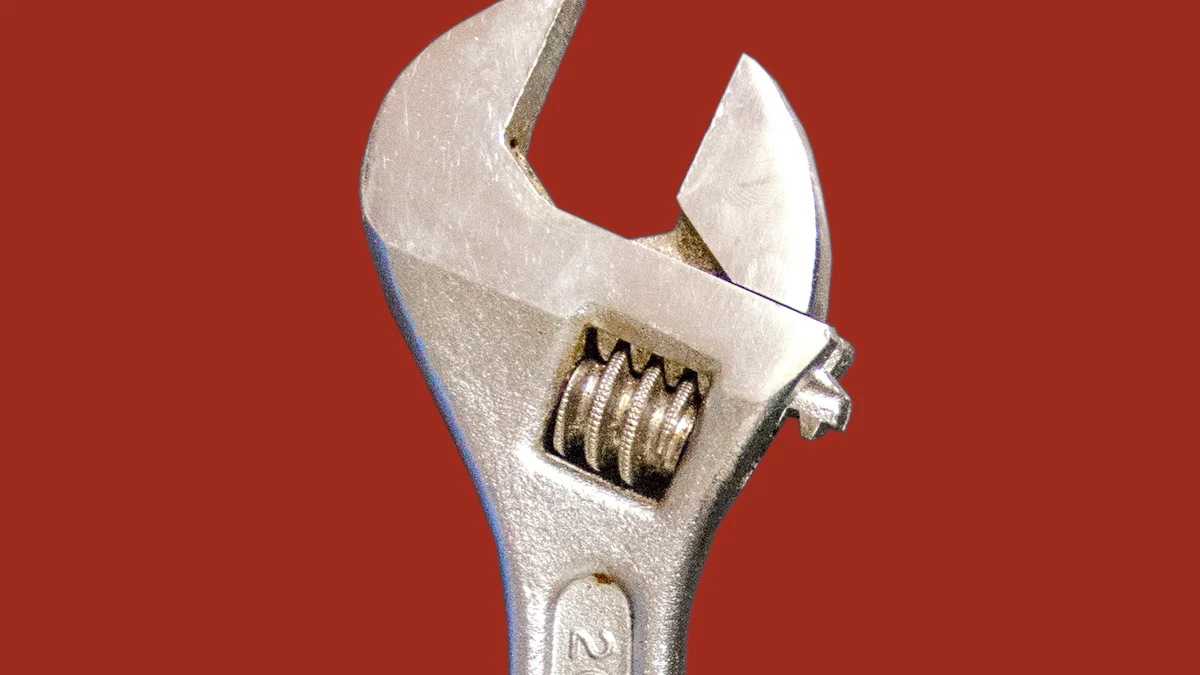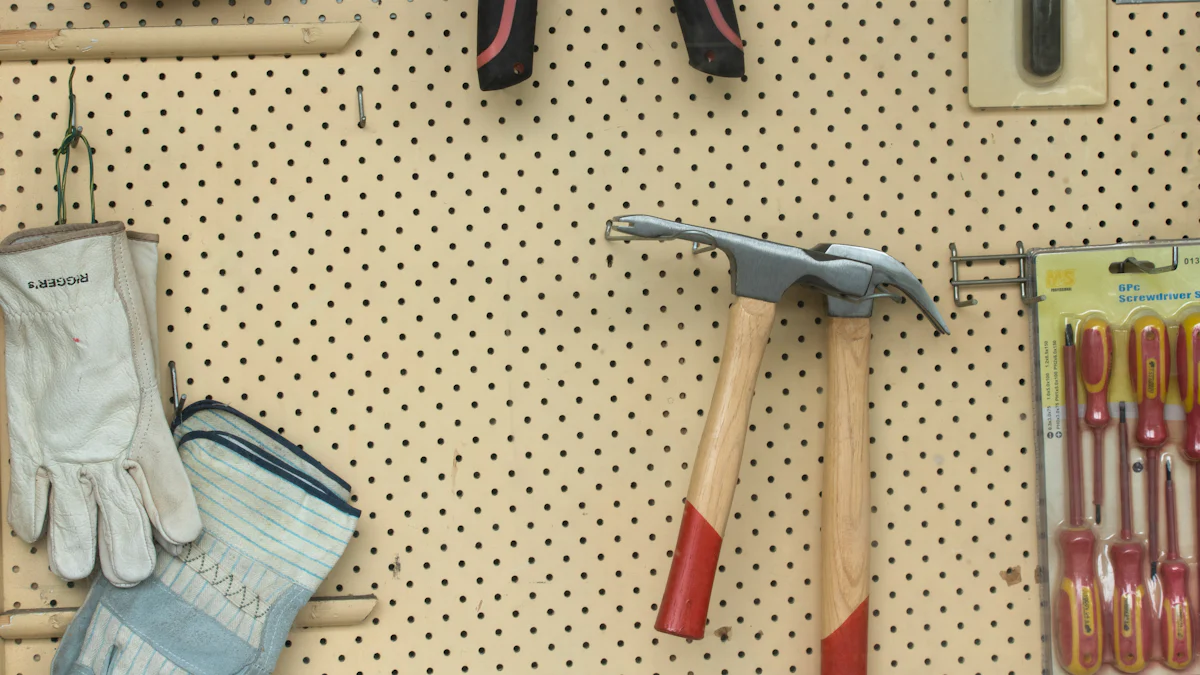
Mastering how to use a spanner wrench proves essential for anyone involved in mechanical work. This guide offers a comprehensive understanding of this indispensable tool. Proper use of a spanner wrench enhances efficiency and ensures the longevity of equipment. Industries such as manufacturing and construction rely heavily on spanner wrenches for maintaining product quality and operational smoothness. Knowing how to use a spanner wrench correctly can prevent common mistakes and improve overall safety.
Understanding the Spanner Wrench
Definition and Purpose
What is a Spanner Wrench?
A spanner wrench is a tool designed to provide a firm grip and mechanical advantage in applying torque to turn objects, such as nuts and bolts. The tool features a handle and a head that fits around the fastener. This design allows for efficient tightening or loosening of fasteners with different sizes and shapes.
Common Uses in Various Industries
Spanner wrenches find applications across multiple industries. In manufacturing, workers use these tools to assemble machinery and equipment. Construction professionals rely on spanner wrenches for building structures and installing fixtures. Automotive technicians use them to repair and maintain vehicles. Each industry benefits from the versatility and reliability of spanner wrenches.
Types of Spanner Wrenches
Adjustable Spanner Wrenches
An adjustable spanner wrench features a movable jaw, allowing it to fit various sizes of fastener heads. This adaptability makes it a versatile tool for many tasks. Users can adjust the jaw to match the size of the nut or bolt, ensuring a secure grip. This type of wrench proves useful in situations where the exact size of the fastener is unknown.
Fixed Spanner Wrenches
A fixed spanner wrench has a set jaw size, designed to fit a specific fastener size. This design provides a more stable and secure grip compared to adjustable wrenches. Fixed spanner wrenches come in various sizes, each tailored to a particular fastener dimension. These wrenches are ideal for tasks requiring precision and stability.
Hook Spanner Wrenches
Hook spanner wrenches feature a hook-shaped end that engages with notches or slots on the fastener. This design allows for turning round objects with limited gripping surfaces. Workers often use hook spanner wrenches in applications involving cylindrical parts, such as pipes and shafts. The hook design ensures a firm grip and efficient torque application.
Pin Spanner Wrenches
Pin spanner wrenches have pins that fit into holes or slots on the fastener. This design provides a secure grip on circular objects with pre-drilled holes. Pin spanner wrenches are commonly used in machinery maintenance and repair. The pins ensure precise engagement with the fastener, reducing the risk of slippage and damage.
Understanding the various types of spanner wrenches and their specific uses enhances efficiency and safety in mechanical tasks. Each type offers unique advantages tailored to different applications, making spanner wrenches indispensable tools in many industries.
How to Use a Spanner Wrench

Step-by-Step Guide
Selecting the Right Spanner Wrench
Choosing the appropriate spanner wrench ensures efficient and safe operation. Identify the fastener size before selecting the tool. Use an adjustable spanner wrench for unknown fastener sizes. Opt for a fixed spanner wrench for tasks requiring precision.
Preparing the Work Area
A clean and organized work area enhances safety and efficiency. Remove any debris or obstructions around the workspace. Ensure adequate lighting to clearly see the fastener and tool. Position the workpiece securely to prevent movement during operation.
Proper Grip and Handling
Gripping the spanner wrench correctly prevents slippage and injury. Hold the handle firmly with one hand. Place the other hand near the jaw for additional control. Align the wrench head with the fastener to ensure a secure fit.
Applying the Spanner Wrench
Position the spanner wrench around the nut or bolt. Twist the wrench in an anticlockwise direction to tighten the fastener. Twist in a clockwise direction to loosen it. Apply steady pressure to the handle to maintain contact with the fastener. Avoid sudden or jerky movements to prevent damage.
Tips for Effective Use
Ensuring a Secure Fit
A secure fit between the spanner wrench and the fastener ensures effective operation. Adjust the wrench jaw to match the fastener size. Check the fit before applying torque. A loose fit can cause slippage and damage.
Avoiding Common Mistakes
Avoid common mistakes to ensure safe and efficient use. Do not use the wrong size wrench for the fastener. Avoid over-tightening, which can strip the fastener. Do not use a damaged or worn-out wrench. Regularly inspect tools for wear and tear.
Maintenance and Care
Proper maintenance extends the lifespan of spanner wrenches. Clean the tool after each use to remove dirt and debris. Store the wrench in a dry place to prevent rust. Regularly lubricate moving parts of adjustable wrenches. Inspect the tool periodically for signs of damage.
Safety Precautions

Personal Protective Equipment (PPE)
Importance of PPE
Personal Protective Equipment (PPE) plays a critical role in ensuring safety when using spanner wrenches. PPE minimizes the risk of injuries by providing a barrier between the user and potential hazards. Proper use of PPE enhances overall safety and efficiency in mechanical tasks.
Recommended PPE for Using Spanner Wrenches
When using a spanner wrench, wearing appropriate PPE is essential. The following items are recommended:
- Safety Glasses: Protects eyes from flying debris and accidental contact with the tool.
- Gloves: Provides a better grip and protects hands from cuts and abrasions.
- Steel-Toe Boots: Shields feet from heavy objects that might fall during the operation.
- Hearing Protection: Necessary in noisy environments to prevent hearing damage.
Safe Handling Practices
Inspecting the Tool Before Use
Inspecting the spanner wrench before use ensures it is in good working condition. Check for any signs of wear or damage, such as cracks or deformations. Ensure the adjustable parts move smoothly without resistance. A thorough inspection prevents accidents caused by faulty tools.
Proper Storage
Proper storage of spanner wrenches extends their lifespan and maintains their functionality. Store the tools in a dry, clean place to prevent rust and corrosion. Use a tool organizer or toolbox to keep the wrenches sorted by size and type. Proper storage also makes it easier to find the right tool when needed.
Emergency Procedures
Knowing emergency procedures is vital for handling accidents effectively. In case of an injury, immediately stop work and assess the situation. Apply first aid if necessary and seek medical attention for serious injuries. Report the incident to a supervisor or safety officer. Having a clear emergency plan ensures quick and efficient response to accidents.
FAQs and Key Takeaways
Frequently Asked Questions
Common Concerns and Solutions
Q: What is the proper way to select a spanner wrench?
A: Identify the fastener size before choosing a spanner wrench. Use an adjustable spanner wrench for unknown sizes. Opt for a fixed spanner wrench for precision tasks.
Q: How can one ensure a secure fit with a spanner wrench?
A: Adjust the wrench jaw to match the fastener size. Check the fit before applying torque. A loose fit can cause slippage and damage.
Q: What are the essential safety tips when using a spanner wrench?
A: Wear appropriate Personal Protective Equipment (PPE) such as safety glasses, gloves, and steel-toe boots. Inspect the tool before use and store it properly after use.
Q: How does one avoid common mistakes while using a spanner wrench?
A: Avoid using the wrong size wrench. Do not over-tighten fasteners. Regularly inspect tools for wear and tear. Follow proper maintenance and care practices.
Q: What should be done in case of an emergency while using a spanner wrench?
A: Stop work immediately and assess the situation. Apply first aid if necessary and seek medical attention for serious injuries. Report the incident to a supervisor or safety officer.
Key Takeaways
Summary of Important Points
- Selecting the Right Spanner Wrench: Choose the appropriate spanner wrench based on the fastener size. Use adjustable spanner wrenches for unknown sizes and fixed spanner wrenches for precision tasks.
- Proper Grip and Handling: Hold the handle firmly and place the other hand near the jaw for additional control. Align the wrench head with the fastener to ensure a secure fit.
- Applying the Spanner Wrench: Position the wrench around the nut or bolt. Twist in an anticlockwise direction to tighten and clockwise to loosen. Apply steady pressure to maintain contact with the fastener.
- Safety Precautions: Wear appropriate PPE such as safety glasses, gloves, and steel-toe boots. Inspect the tool before use and store it properly after use. Know emergency procedures and report incidents promptly.
- Maintenance and Care: Clean the tool after each use. Store in a dry place to prevent rust. Lubricate moving parts of adjustable wrenches regularly. Inspect periodically for signs of damage.
Understanding how to use a spanner wrench correctly enhances efficiency and safety in mechanical tasks. Proper selection, handling, and maintenance of spanner wrenches ensure effective operation and longevity of the tools.
Mastering the spanner wrench proves essential for anyone involved in mechanical tasks. Proper use enhances efficiency and ensures equipment longevity. Applying the knowledge and tips provided in this guide will improve safety and effectiveness.
Readers are encouraged to share experiences and ask further questions. Engaging with the community fosters learning and skill development. Safety must remain the top priority while working with wrenches or spanners.
See Also
Scooter Upgrades: High-Quality Parts for Maximum Performance
Winter Bliss: Stay Warm and Cozy with Soft Socks
Dive into Diverse Sock Options for All Genders
